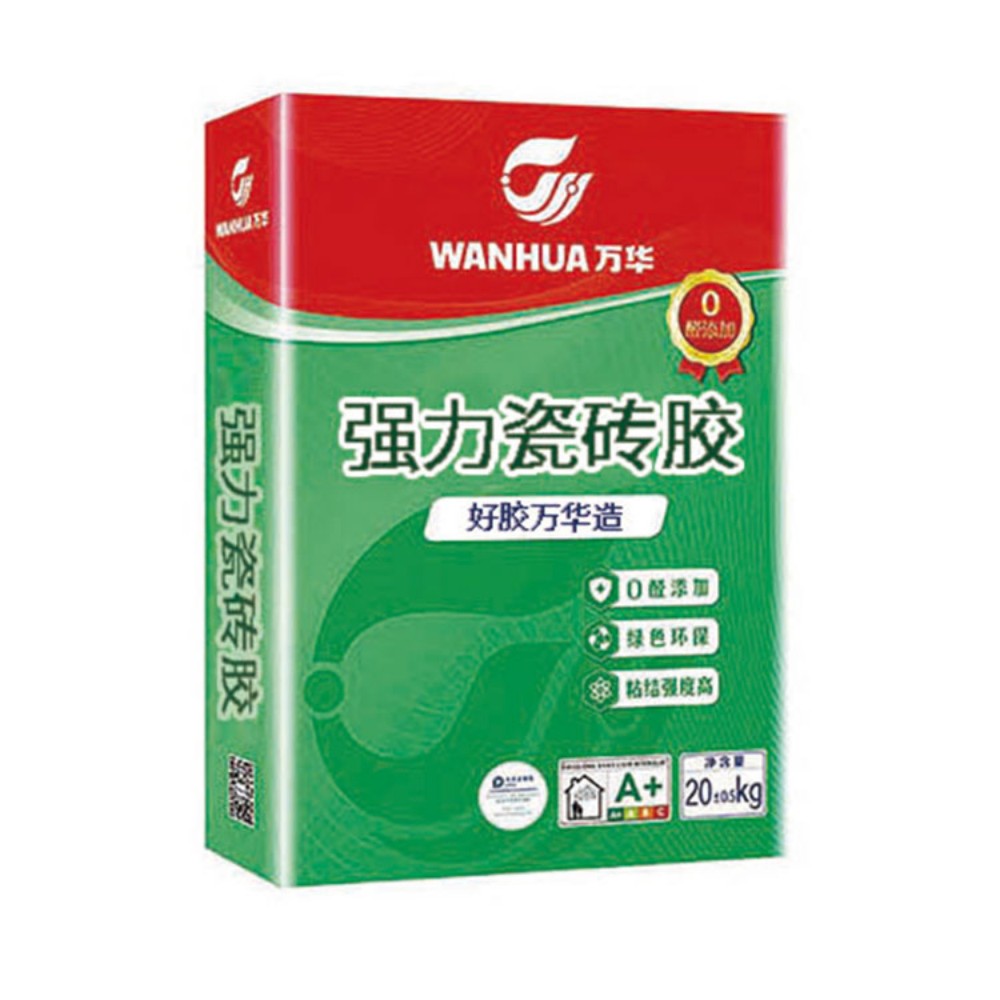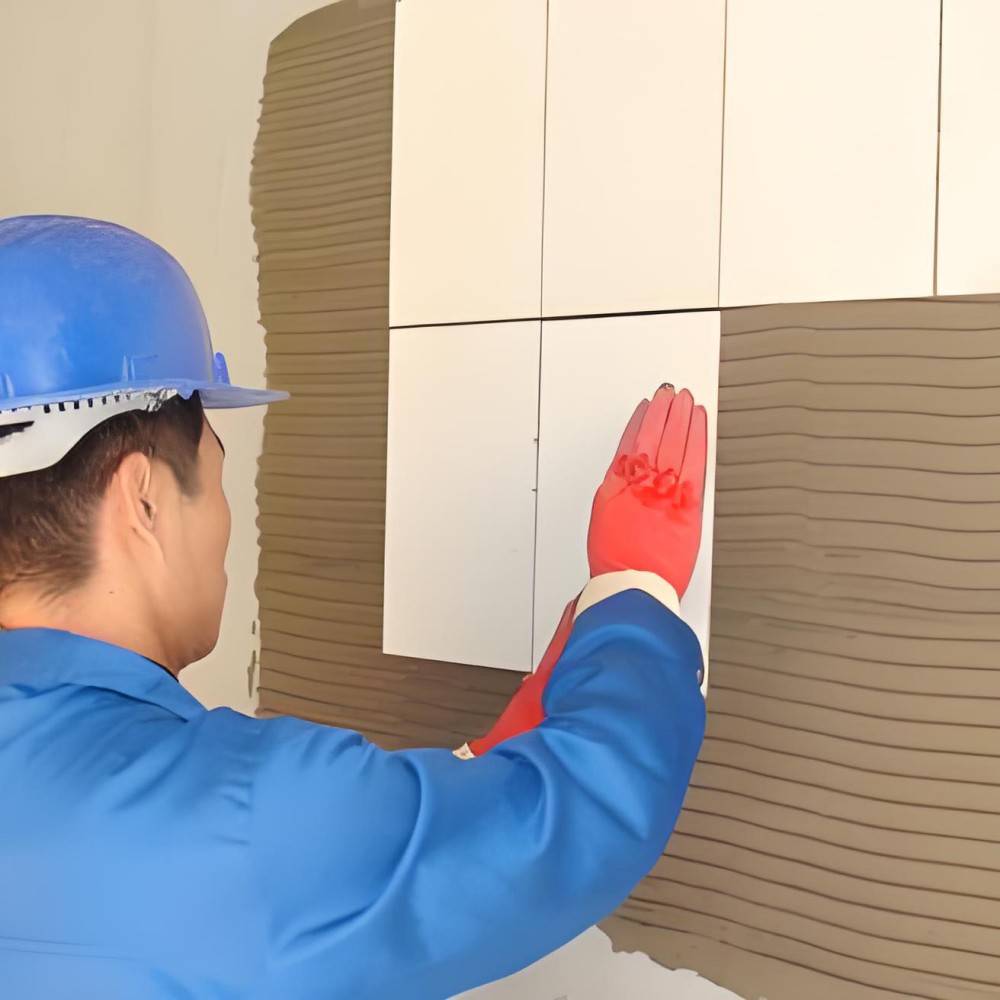

In architectural decoration projects, tile laying is a key link that affects the aesthetics, practicality, and durability of a space. The selection of bonding materials directly determines the quality and service life of tile laying. As a new type of bonding material, Shandong tile adhesive shows significant differences from traditional cement mortar in practical application. The following is an in-depth comparison from four core dimensions: bonding performance, construction convenience, environmental protection, and comprehensive cost, providing comprehensive references for project material selection.
1. Bonding Performance: The Difference from "Physical Adsorption" to "Molecular-Level Adhesion"
Bonding performance is a core indicator for measuring tile bonding materials, directly related to whether tiles will have quality problems such as hollowing and falling off. There are essential differences between the two in terms of bonding principles and actual performance.
(1) Cement Mortar: Relying on Hydration Reaction with Limited Bonding Stability
The bonding force of cement mortar mainly comes from the hydration reaction between cement and water. Components such as tricalcium silicate and dicalcium silicate in cement react with water to form cementitious products such as calcium silicate hydrate and calcium aluminate hydrate. These products adhere to the back of tiles and the surface of the base course through physical adsorption, forming initial bonding. However, this bonding method has obvious shortcomings:
- Limited Bonding Strength: The bonding of hydration products is mainly based on "macroscopic physical bonding", which has high requirements for the flatness of the tile back and the dryness of the base course. If there are tiny cracks in the base course (such as micro-cracks caused by wall settlement) or large humidity fluctuations (such as bathrooms and kitchens in a long-term humid environment), the structure of hydration products is easily damaged, and the bonding strength will decrease over time. Usually, tile hollowing may occur within 3-5 years, and in severe cases, even entire tiles may fall off.
- Narrow Application Scope: For large-sized tiles (such as 800×800mm, 1200×600mm and above) or thin tiles, the bonding force of cement mortar is insufficient to support the self-weight of the tiles. After laying, "dropping-type hollowing" is likely to occur due to uneven stress. On special base courses with certain flexibility such as wood boards and gypsum boards, the rigid bonding of cement mortar cannot adapt to the deformation of the base course, which easily leads to tile cracking.
(2) Shandong Tile Adhesive: Empowered by Additives to Achieve "Strong Bonding + High Adaptability"
Shandong tile adhesive is a ready-mixed dry powder material made of cement and quartz sand as basic raw materials, combined with a variety of functional additives such as cellulose ether, redispersible polymer powder, and thixotropic agent. Its bonding performance is qualitatively improved through "chemical modification + physical enhancement":
- More Durable and Stable Bonding Force: Cellulose ether can significantly improve the water retention of the material, ensuring that cement has sufficient time to complete the hydration reaction after construction and avoiding insufficient bonding force caused by rapid water evaporation. The redispersible polymer powder forms an elastic polymer film during the hydration process. This film can penetrate into the tiny pores on the back of the tile and the surface of the base course, forming "molecular-level adhesion". The bonding strength can reach 2-3 times that of cement mortar. Even in long-term humid environments (such as bathroom shower areas) or scenarios with slight vibrations (such as buildings near roads), it can effectively avoid hollowing and falling off.
- Wider Adaptability: Relying on high-strength bonding and certain elasticity, Shandong tile adhesive can be directly used for laying large-sized and heavy tiles without additional hanging parts. For special base courses such as wood boards and gypsum boards, its elastic polymer film can adapt to the slight expansion and contraction of the base course, reducing the internal stress caused by deformation and solving the problem that traditional cement mortar "cannot be bonded firmly and is easy to crack" on special base courses.
2. Construction Convenience: Upgrade from "Experience Dependence" to "Standardized Operation"
Construction convenience directly affects project efficiency, labor costs, and the stability of construction quality. The two differ significantly in operation process, technical threshold, and efficiency.
(1) Cement Mortar: Complex On-Site Mixing, Dependent on Manual Experience
Cement mortar requires on-site mixing of cement, sand, and water. The entire process is highly dependent on "proportion accuracy" and "manual technology", and the construction process is cumbersome:
- Difficult Proportion Control: Different proportions are required for different laying scenarios (for example, a 1:3 cement-sand ratio is commonly used for wall tile laying, and a 1:2.5 ratio is required for floor tile laying due to load-bearing needs). The proportion also needs to be flexibly adjusted according to the cement grade (such as Grade 32.5, Grade 42.5) and sand fineness (medium sand is appropriate; too coarse sand reduces bonding force, while too fine sand is easy to crack). If workers lack experience, problems such as "excessive cement leading to shrinkage and cracking" and "excessive sand leading to insufficient bonding force" may occur, directly affecting construction quality.
- Cumbersome Construction Process and Low Efficiency: Before construction, the base course needs to be plastered and leveled (the error must be controlled within 2mm, otherwise the flatness of the tiles will be affected). During laying, a 10-15mm thick layer of mortar must be evenly applied to the back of the tiles, and then each tile is adjusted one by one. During the process, the tiles are easy to slide and require repeated calibration. A skilled worker can only complete the laying of 15-20 square meters per day, and additional personnel need to be arranged to clean up the scattered mortar on the site, making it difficult to control the construction period.
(2) Shandong Tile Adhesive: Ready-Mixed Formula + Simple Operation, Doubling Efficiency
Shandong tile adhesive is a ready-mixed dry powder material produced in factories, with a highly standardized construction process, which greatly reduces the technical threshold and labor intensity:
- No Complex Proportioning Required: When in use, only 15%-20% clean water needs to be added according to the product instructions (slightly different for different brands), and it can be stirred into a uniform paste with an electric mixer for 3-5 minutes. There is no need to adjust the proportion of cement and sand, and even novices can master the operation, completely avoiding quality problems caused by "proportioning errors".
- Simplified Construction Process and Improved Efficiency: In most cases, there is no need to separately level the base course (tile adhesive can be compatible with a base course error of ±5mm). The tile adhesive is directly applied in a thin layer (usually 3-5mm thick) on the base course (i.e., the "thin-set method"). A thin layer of adhesive can be scraped on the back of the tiles or not, and the tiles are not easy to slide after laying, allowing more time for adjustment. A worker can complete the laying of 30-40 square meters per day, which is more than twice that of cement mortar. In addition, there is no scattered cement or sand on the site, reducing the cleaning workload by 60%, effectively shortening the construction period and lowering labor costs.
3. Environmental Protection: Leap from "Dust Pollution" to "Green Compliance"
With the popularization of the concept of green buildings, the environmental protection of materials has become an important consideration for project material selection. The two differ significantly in environmental impact during production and use.
(1) Cement Mortar: Environmental Hazards in Both Production and Construction
Traditional cement mortar has multiple impacts on the environment and human health throughout its life cycle:
- High Emissions in Production: Cement production requires high-temperature calcination of limestone, and about 0.8 tons of carbon dioxide is emitted per ton of cement, making it a high-carbon industry. If sand mining is not properly controlled, it may also damage river ecosystems.
- Dust Pollution in Construction: A large amount of cement dust and sand particles will be generated during on-site mixing. Most of these dust particles have a particle size of less than 10μm, which are easily inhaled into the lungs by construction workers. Long-term exposure may cause pneumoconiosis. At the same time, the dust will spread to the surrounding environment, polluting the air and affecting residents' lives.
- Potential Risk of Harmful Substances: Some low-quality cements may contain excessive heavy metals (such as lead and cadmium) or free formaldehyde. These substances will be slowly released after laying, leading to substandard indoor air quality and endangering the health of residents.
(2) Shandong Tile Adhesive: Full Compliance with Environmental Standards
Shandong tile adhesive strictly adheres to national environmental protection requirements in production and use, making it more suitable for green building needs:
- Low Pollution in Production: A closed production line is adopted, with no dust leakage during raw material mixing and packaging. Some enterprises also reduce the amount of cement through technological improvement to reduce carbon dioxide emissions, in line with the "dual carbon" goal.
- Low Hazards in Use: The finished product must pass the certification of GB 18583-2008 Limits of Harmful Substances in Adhesives for Indoor Decoration and Refurbishment Materials, in which the formaldehyde emission is ≤0.1g/kg and volatile organic compounds (VOCs) are ≤100g/L, far lower than the national standard limits. Only water needs to be added for mixing during construction, with almost no dust generated. Construction workers do not need to wear heavy dust-proof equipment, and the indoor environment can quickly meet the standards, which can directly meet the requirements of green building evaluation systems such as LEED and domestic Green Building Star 1/2.
4. Cost: Consideration from "Unit Price Comparison" to "Comprehensive Cost"
Most people believe that cement mortar is "cheaper", but in fact, it is necessary to calculate comprehensively based on material loss, labor costs, and long-term maintenance costs. The cost advantages of the two will reverse in different scenarios.
(1) Unit Price Comparison: Cement Mortar Has Short-Term Advantages
In terms of material unit price, the unit cost of cement mortar (cement + sand) is about 15-25 yuan/square meter, while that of Shandong tile adhesive is about 30-45 yuan/square meter. The unit price of the latter is indeed higher than that of the former.
(2) Comprehensive Cost: Shandong Tile Adhesive Has More Long-Term Economy
After integrating "material loss + labor cost + maintenance cost", Shandong tile adhesive has more cost advantages in mid-to-high-end projects or complex scenarios:
- Material Loss: On-site mixing of cement mortar is prone to loss due to proportioning errors and scattering, with a loss rate of about 8%-12%. Shandong tile adhesive is evenly mixed and uses the "thin-set method" with less dosage, resulting in a loss rate of only 3%-5%. A 1,000-square-meter project can save 50-90 square meters of material costs.
- Labor Cost: The labor cost for cement mortar construction is about 40-60 yuan/square meter. Due to high efficiency, the labor cost for Shandong tile adhesive is only 20-30 yuan/square meter. A 1,000-square-meter project can save 20,000-40,000 yuan in labor costs.
- Long-Term Maintenance Cost: Tiles laid with cement mortar need to be maintained (hollowing repair, tile replacement) every 5-8 years, with a single maintenance cost of about 80-100 yuan/square meter. However, tiles laid with Shandong tile adhesive have a service life of 15-20 years and require almost no maintenance during this period, which can save a lot of maintenance expenses in the long run.
In conclusion, cement mortar can meet basic needs for economical home decoration and simple projects with loose construction periods. However, for high-end residential buildings, commercial spaces (such as shopping malls and hotels), humid environments (such as bathrooms and swimming pools), or projects with special base courses, the comprehensive cost advantages and quality assurance of Shandong tile adhesive are more worthy of selection.

